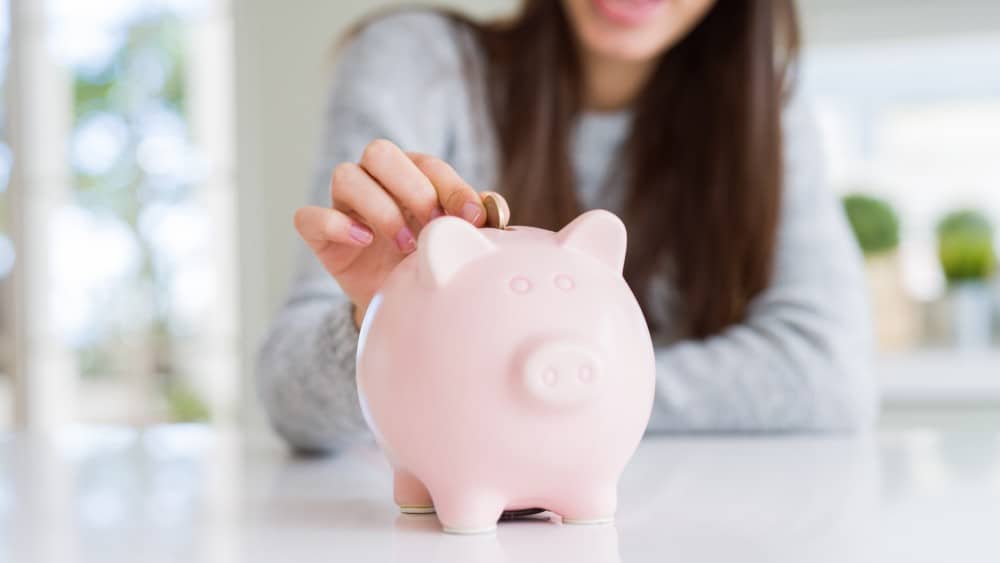Startups, a leading resource for starting a business, reports that nearly 50% of Brits have a side hustle earning them £1,096 per month on average. Selling on eBay is a popular second source of income, with 187 million global users according to Oberlo, 25% of which are in the UK.
Are you looking for some extra money to buy a car, invest in stocks and shares or just pay off your debts? Selling goods on eBay could make you over £1,000 per year.
Whether you’re looking to declutter your home or start a business selling products online, here are five top tips to maximise your profits on eBay.
Should you invest £1,000 in Ishares Physical Metals Plc - Ishares Physical Gold Etc right now?
When investing expert Mark Rogers has a stock tip, it can pay to listen. After all, the flagship Motley Fool Share Advisor newsletter he has run for nearly a decade has provided thousands of paying members with top stock recommendations from the UK and US markets. And right now, Mark thinks there are 6 standout stocks that investors should consider buying. Want to see if Ishares Physical Metals Plc - Ishares Physical Gold Etc made the list?
[top_pitch]
1. What products should you sell?
New items account for 80% of products sold on eBay. However, Oberlo reports that used items have a higher success rate with 50% of listed items being sold.
According to Good Housekeeping, these were the best items to sell in January, together with average selling prices:
- Mobile phones: £163
- Watches: £131
- Women’s bags: £45
- Video games consoles: £85
- Men’s coats: £48
You may be able to charge higher prices if you can find a niche with a limited supply. For example, a friend of mine sells vintage Lego. He buys boxes of second-hand Lego for £20 and re-sells the higher-value individual pieces. Some items (such as a 1980s astronaut’s helmet) sell for £10-£20 and total sales are around £100 per box. Another of my friends sold dumb bells during lockdown.
Branded items sell well and vintage clothing is currently popular. That garish 1980s shell suit at the back of your wardrobe may just start a bidding war! Broken electronics can be sold for parts.
2. How do you maximise the sale price?
The eBay search function for completed listings is a great tool for researching sale prices. You can search by product name and filter by completed/sold items.
eBay has two main selling options to choose from:
- Fixed price or Buy it Now: you list the product at a set price (88% of eBay sales).
- Auctions: you set the duration (from 1-10 days) and the starting price, and the highest bidder wins.
Auctions are good for high-demand items, where competition can push prices up, although you can end up selling for a low price too if interest is low. When using the auction approach, it’s best to:
- Choose the longest time period (10 days).
- Time the listing to end on a weekend evening (using the free ‘schedule listing’ option).
- Choose your starting price carefully. eBay encourages sellers to list at 99p to attract more buyers and maximise the selling price. But this is risky for an expensive item if you end up with only one bidder. It may be helpful to look at the start price and bidding history on sold items.
3. How do you minimise fees?
eBay charges two types of fees:
- Listing fees: free for private sellers (up to 1,000 listings per month).
- Final value fees: 12.8% of the total sale (including postage) plus a fixed charge of 30p per order. This can add up on small-value items. If you sell something for 99 pence plus postage of £1, then you’ll pay 55p in fees.
eBay has regular fee promotions every few weeks, with £1 maximum and 70-80% off final value fees. It’s worth ending and re-listing your items during these promotions.
[middle_pitch]
4. How do you save on postage costs?
Postage costs can seriously erode your profits, particularly as you pay a 12.8% fee on your quoted postage costs too. Here are some ways to save:
- Offer free postage on your orders (and incorporate the cost into your item price). You may attract more buyers and you’re automatically given the maximum feedback rating for ‘postage’.
- Royal Mail is often the cheapest option for letter-sized items. If you’re sending a 2kg small parcel by second-class post, it costs £3.20 at the post office, but £2.90 if you do it online.
- Sites such as Parcel2Go allow you to compare the cost of sending your item by courier (Hermes, DPD, UPS, etc.).
- If the item is too heavy to post, you can set your listing to ‘collection in person only’.
5. How else can you maximise your profit?
Keywords help to make your title as detailed as possible, and it’s good to include a number of photos. Be honest in your description; if your coat has a hole in the sleeve, mentioned it in the ‘item condition’ section. This reduces the likelihood of the buyer raising a dispute that the item wasn’t as described.
Sellers with a feedback score of over 95% sell more items. Dispatching your item quickly, keeping your buyer informed and ensuring that your listings are accurate should maximise your feedback from buyers.
Above all, I recommend deciding the minimum amount of profit you want to make before setting your selling price. Consider the cost of the product (if applicable), fees, postage and packaging, as well as your time, to make this side hustle work for you.







